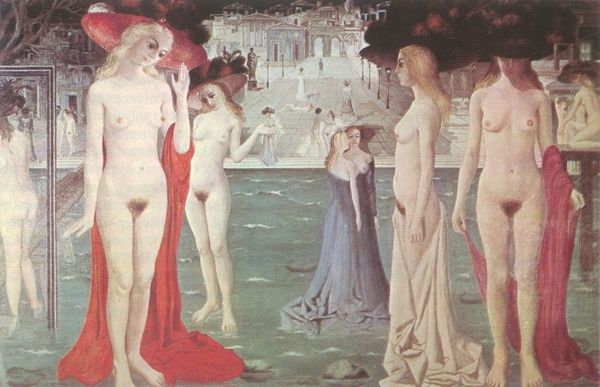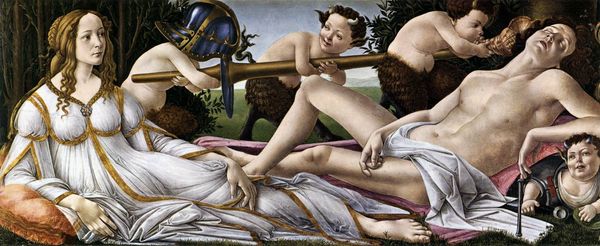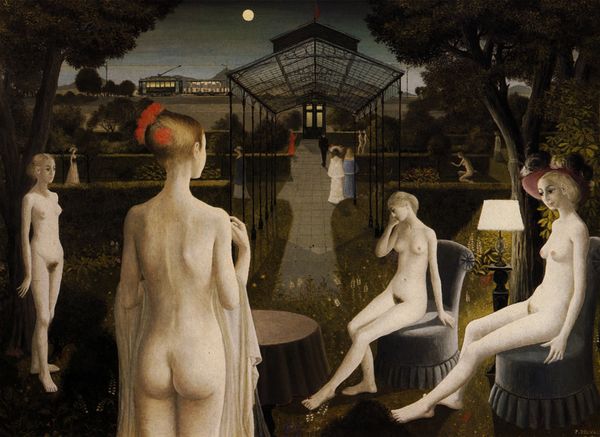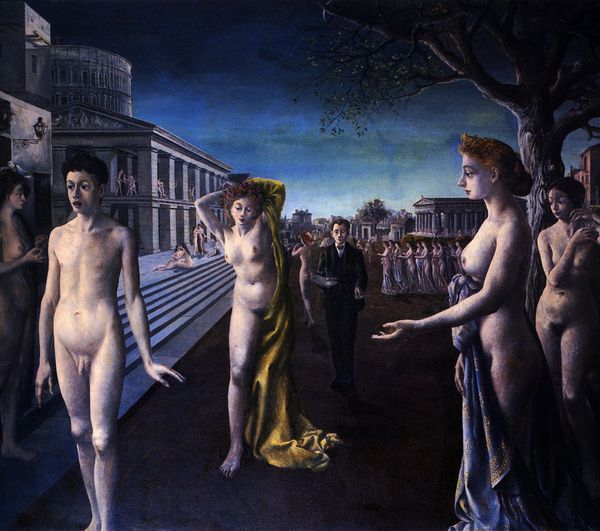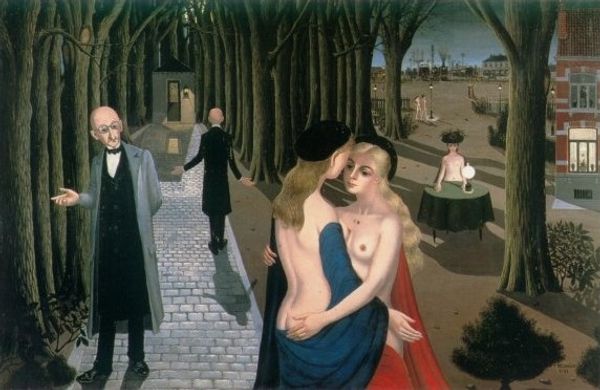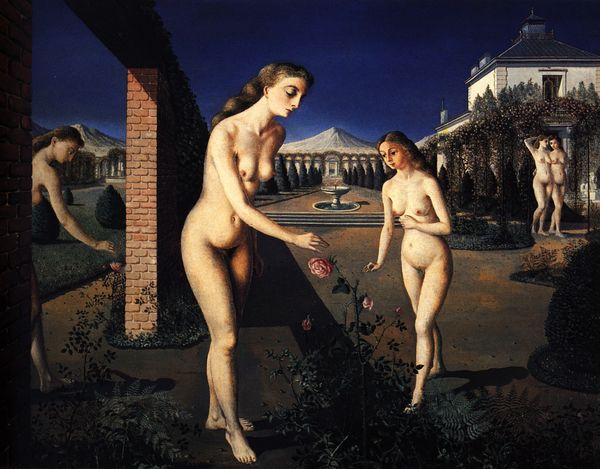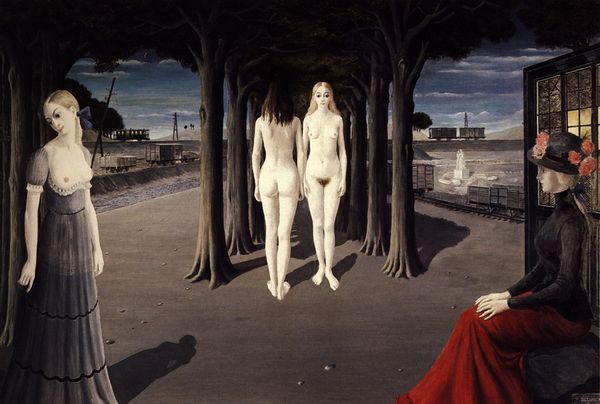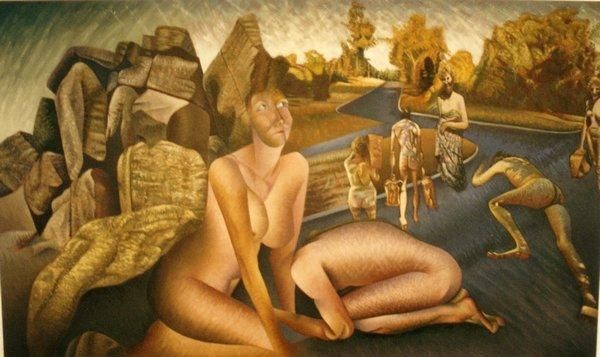
oil-paint
#
oil-paint
#
landscape
#
figuration
#
oil painting
#
female-nude
#
surrealism
#
cityscape
#
surrealist
#
nude
#
surrealism
Copyright: Paul Delvaux,Fair Use
Curator: This is “Gallery” by Paul Delvaux, painted in oil on canvas in the late 1970s. It exemplifies his surrealist approach to cityscapes and the female nude. Editor: It feels like a dreamscape. There’s such an eerie stillness, amplified by the monumental architecture contrasting with these disrobed figures. Curator: Delvaux often incorporates classical architectural elements, echoing Roman or Greek structures. The construction of the receding gallery space emphasizes perspective, drawing our eyes deep into the painted surface. What are your thoughts on the materials employed? The handling of light and texture? Editor: Well, the almost metallic coolness in the palette gives everything an artificial sheen. The texture seems smooth, almost airbrushed which emphasizes the figures’ presence in this artificial space. It looks technically adept but somehow detached; considering Delvaux was using oil paints here, what choices might inform his stylistic approach and his subject matter? Curator: His works explore a recurring cast of women within what feels like meticulously constructed stage sets. Delvaux was clearly engaging with broader currents in 20th century art. His focus was predominantly figurative—women are often at the center and are his most recurrent subjects, wouldn't you say? How do you view his selection process, his approach of depicting those sorts of bodies within specific contexts? Editor: It's undeniably tied to the male gaze and a certain eroticism. The fact that the women exist in public galleries suggests he’s examining the display of women both in art and in society. Perhaps even reflecting on how the cultural institutions contributed in objectifying the female form across various art historical epochs. Curator: Indeed. I find myself thinking about the gallery space itself as an apparatus. It influences what’s considered ‘art’ but also dictates access, perception. How the public’s view, including the labor required to make that type of institution possible is often kept behind the scenes. Editor: So, viewing “Gallery” opens many questions regarding societal frameworks that impact and contribute towards interpreting pieces of artwork. It invites considerations on the role, effects, but also accountability from museums as prominent display venues. Curator: Absolutely, viewing “Gallery” through a materialist lens and an institutional scope provides layered analysis! Editor: A journey from aesthetic evaluation towards a cultural consideration of visual narratives, it would seem.
Comments
No comments
Be the first to comment and join the conversation on the ultimate creative platform.
